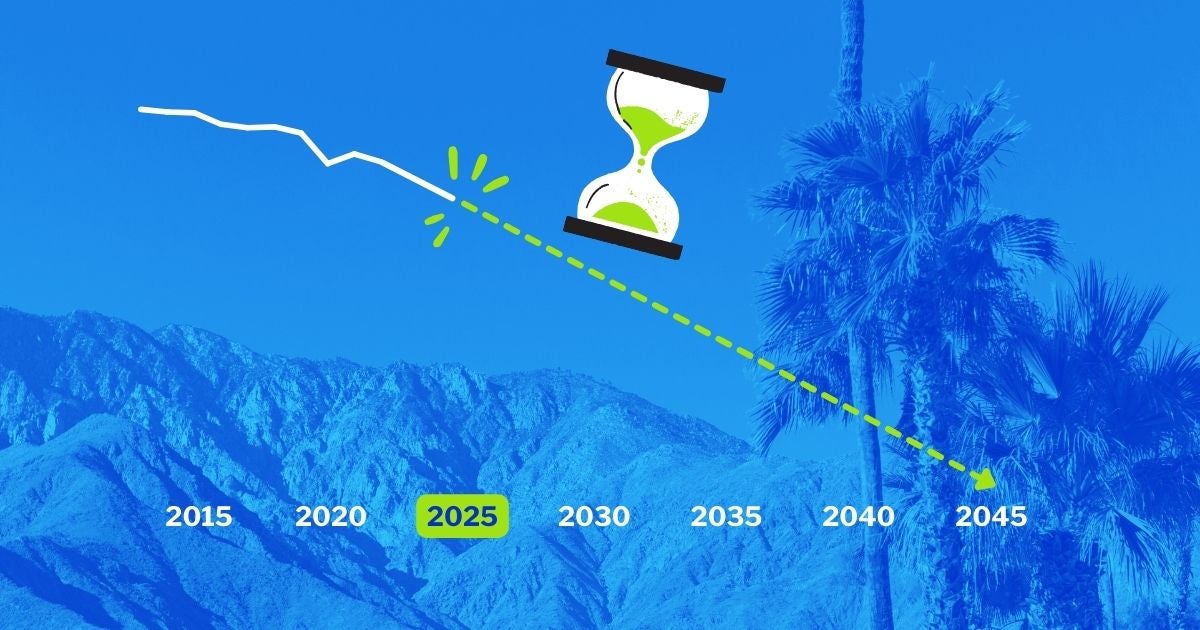
A baffling proposal for California’s cap-and-trade program: How lowering the price ceiling creates a loophole for more pollution and reduces affordability
As all California climate policy nerds know, things are heating up in Sacramento around the details for extending the state’s landmark cap-and-trade program. There are many ways in which the program can be strengthened to better align with the state’s emission reduction targets and address affordability challenges for working families, both of which are needed now more than ever.
However, a baffling new proposal would undermine the credibility of the program and abandon its track record of results by dramatically lowering the price ceiling for emissions allowances. If enacted, it would allow for unlimited emissions, make it a tossup if California meets its climate goals, and decimate the program’s ability to raise revenue for climate action. Let’s unpack why.
A low price ceiling: the ultimate emissions loophole?
One aspect of the cap-and-trade program, added in 2017, is the price ceiling — the maximum amount that companies would ever pay for one ton of emissions. Allow us to get wonky as we dig into why this current design matters for emissions reductions and affordability. Here are some important things to know:
1. Lowering the price ceiling will lead to more pollution
If the price ceiling is lowered, it would open a loophole that undercuts the whole premise of this program operating as an emissions backstop. Lowering the price ceiling to an artificially low level makes it far more likely that prices will reach that ceiling and allow polluters to access unlimited emissions allowances at a fixed price — transforming California’s landmark cap-and-trade program into, effectively, a backdoor carbon tax that provides no emissions certainty and guts the revenue-raising capacity of a program that has delivered billions in investments for communities and climate resilience.
2. Cap and trade ensures emission reductions while a carbon tax does not
Two options to reduce greenhouse gas emissions are cap and trade (which California has run successfully for the past 12 years), and a carbon tax. Under cap and trade, emissions are limited by the cap, which provides certainty for emissions reduction. Supply and demand determine the price for emissions, but the maximum amount of emissions that are allowed to happen every year is limited and must decline over time. This is the ‘cap’ of cap and trade.
A carbon tax, by contrast, sets a fixed price on emissions but does not establish a limit on emissions overall — meaning as long as polluters can afford the tax, they can emit as much as they want. It is effectively a pay-to-pollute system, whereas cap and trade charges polluters for their emissions and requires them to decline in line with state targets. Cap and trade is the only option that guarantees emissions actually go down while generating revenue to invest in affordability and climate solutions. If the price is restricted, then so is urgently-needed program revenue.
3. Cost containment is built into cap and trade
Even though cap and trade doesn’t set a fixed price on emissions, the program has important cost containment mechanisms that come into play to make sure allowance prices don’t get unreasonably high or low. These include the price floor, the Allowance Price Containment Reserve (APCR) and the price ceiling.
Prices in California have never reached the APCR (more on how that functions here), but if they did, a set number of allowances that are still within the overall number of emissions under the cap would be made available for auction so that, in the event of really high demand, covered entities could still have a chance to get the allowances they need. If prices ever exceeded the APCR, they could hit the price ceiling. If that were to occur, then the California Air Resources Board (CARB) is required to create as many NEW allowances as are needed to meet the demand of that auction, regardless of the emissions cap. This means that if demand gets high enough, CARB can blow through the emissions cap, undermining the environmental integrity of this program. CARB is required to purchase offsets to counter the excess emissions at the price ceiling, using the revenue from those allowances, but then effectively California has a tax-and-offset program, not a cap-and-invest program.
Fortunately, this hasn’t happened before in the California program, because the price ceiling has been appropriately calibrated to the allowance market. However, if the price ceiling were to be lowered, it becomes much more likely that the threshold price will be exceeded and unlimited emissions will become a reality.
A low price ceiling threatens climate partnerships
On top of all this, changing a foundational cap and trade program feature could jeopardize California’s decade-long emissions market partnership with Quebec and our potential future linkage with Washington state. Fundamentally altering the program in this way risks putting an unnecessary target on California’s back in isolating itself from other states taking action on climate, and shuts the door to major opportunities for regional collaboration.
Weakening a program that is delivering results would also set a dangerous precedent for other states that are considering the kind of ambitious climate action that a strong cap-and-trade program would deliver. At a time when the federal government has turned its back on climate science, inter-state and international climate action partnerships have never been more necessary and undermining these partnerships is counter to California’s legacy of leadership.
California needs a cap-and-trade reauthorization bill that builds on the state’s success in cutting emissions, generating revenue to invest in communities, and fostering partnerships. Rather than making it possible for polluters to emit an unlimited amount at a lower price point, policymakers should be focused on protecting what works and increasing the ambition of cap and trade to deliver results.
Better affordability solutions exist
If the priority for lawmakers is reducing costs for households and businesses, there are more effective tools available.
- First, California should prioritize enhancing the California Climate Credit, which delivers direct savings to households on their utility bills and ensures families see the benefits of this program.
- Second, free allowances should be carefully targeted only where they are truly needed to prevent emissions leakage, rather than being distributed according to outdated allocation formulas that are based on politics instead of actual need.
- Third, the Legislature should invest Greenhouse Gas Reduction Fund money in ways that directly address household affordability.
By strengthening these measures that actually address cost containment, the state can improve affordability outcomes for working families while keeping this program on track to cut emissions in line with its targets.












